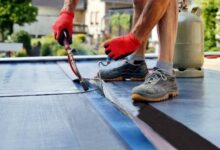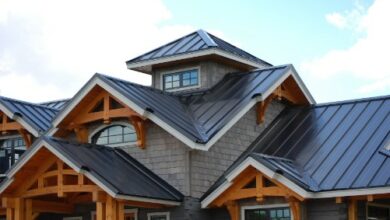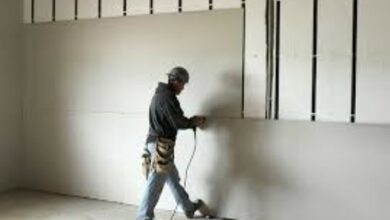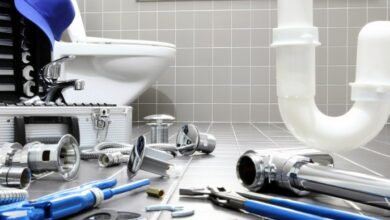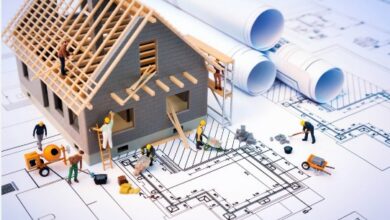Mold Remediation Services: Removing Mold and Restoring Indoor Air Quality

Mold growth in homes and buildings poses serious health risks and can significantly impact indoor air quality. Mold remediation services from ProMaster Restoration Services are essential for addressing these issues, ensuring that mold is effectively removed and the indoor environment is restored to a safe and healthy state. We will explore the mold remediation process, focusing on the steps involved in removing mold and the measures taken to restore and improve indoor air quality. Understanding these processes can help homeowners and building managers make informed decisions when dealing with mold problems.
The Mold Remediation Process
The mold remediation begins with thoroughly inspecting and assessing the affected area. Mold can grow in various places, including walls, ceilings, floors, and HVAC systems. During the inspection, professionals look for visible signs of mold growth and areas with high moisture levels, which can indicate hidden mold. Moisture meters and infrared cameras are often used to detect moisture and potential mold growth in areas that are not easily visible.
Once the assessment is complete, the next step is to contain the affected area to prevent the spread of mold spores to other parts of the building. This is typically done by using physical barriers, such as plastic sheeting, and creating negative air pressure using air scrubbers equipped with HEPA filters. Containment is crucial to ensure mold spores do not contaminate other areas during remediation.
Once the area is contained, the actual mold removal process can begin. This involves the use of specialized equipment and techniques to safely remove mold-infested materials. Porous materials, such as drywall, insulation, and carpeting, often need to be removed and discarded, as mold can penetrate deep into them, making it difficult to clean them thoroughly. Non-porous materials like metal, glass, and hard plastics can typically be cleaned and disinfected.
Mold removal is typically followed by cleaning and sanitizing the affected area. This step involves using antimicrobial and antifungal treatments to eliminate any remaining mold spores and prevent future growth. Cleaning also includes wiping down surfaces, vacuuming with HEPA-filtered vacuums, and, in some cases, using fogging machines to treat the air and surfaces. Ensuring that all mold spores are effectively removed is important to prevent recurrence.
After the mold has been removed and the area cleaned, the next step is drying and dehumidifying the space to eliminate any remaining moisture. Mold thrives in damp environments, so it’s crucial to reduce humidity levels and thoroughly dry all affected areas. Dehumidifiers and industrial-grade drying equipment are often used to expedite this process. Moisture levels should be monitored throughout to ensure the area remains dry and sterile to mold growth.
Read also: Beyond Flowers: Innovative Ways to Decorate Your Garden Space
Restoring Indoor Air Quality
Restoring indoor air quality is a vital component of mold remediation. Mold spores can remain airborne long after the visible mold is removed, posing health risks to occupants. Therefore, improving indoor air quality involves several steps to ensure clean and safe air quality.
One of the first steps in restoring indoor air quality is using air filtration devices, such as HEPA air purifiers, to remove mold spores and other contaminants. These devices can capture particles as small as 0.3 microns, effectively reducing the concentration of mold spores in the indoor environment. Air purifiers should be used continuously during and after remediation to maintain clean air.
Ventilation is another critical factor in improving indoor air quality. Proper ventilation helps to dilute and remove airborne contaminants, including mold spores. This can be achieved by opening windows and doors, using exhaust fans, and ensuring the HVAC system functions correctly. In some cases, additional ventilation systems may need to be installed to enhance airflow and reduce indoor humidity levels.
Cleaning and maintaining the HVAC system is essential for restoring indoor air quality. Mold spores can accumulate in ductwork and other HVAC system components, leading to the continuous circulation of contaminated air. Professional HVAC system cleaning, including ducts, coils, and filters, can help eliminate mold spores and improve overall air quality. Regular maintenance of the HVAC system, such as changing filters and cleaning vents, is important to prevent future mold growth and ensure efficient operation.
Another important step in restoring indoor air quality is addressing any underlying moisture issues contributing to mold growth. This may involve repairing leaks, improving drainage, and ensuring the building is properly sealed to prevent water intrusion. Reducing indoor humidity levels through dehumidifiers and proper ventilation is also crucial. By addressing these issues, homeowners can create an environment less conducive to mold growth, improving air quality and preventing future problems.
In addition to these measures, post-remediation testing is important to verify that the mold has been successfully removed and that indoor air quality has been restored. This involves collecting air and surface samples to test for mold spores and other contaminants. Professional mold inspectors use specialized equipment and techniques to ensure accurate results. Post-remediation testing provides peace of mind that the remediation process was successful and that the indoor environment is safe.
Education and awareness are also key components of maintaining good indoor air quality. Homeowners and building managers should be informed about the signs of mold growth, the importance of regular inspections, and the steps to take if mold is detected. A routine maintenance schedule, including regular cleaning, monitoring humidity levels, and promptly addressing water issues, can help prevent mold problems and maintain a healthy indoor environment.
Conclusion
Mold remediation services are essential for removing mold and restoring indoor air quality in homes and buildings. The process involves thorough inspection, containment, removal, cleaning, and drying to ensure that mold is effectively eliminated and that the affected area is safe. Restoring indoor air quality involves air filtration, improving ventilation, cleaning HVAC systems, addressing moisture issues, and conducting post-remediation testing. By understanding and implementing these steps, homeowners and building managers can protect their properties and the health of their occupants, ensuring a safe and healthy indoor environment.




